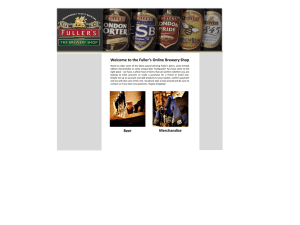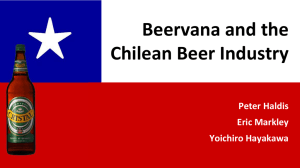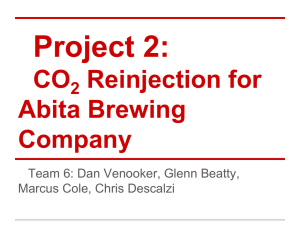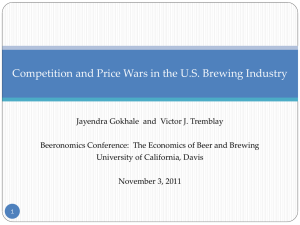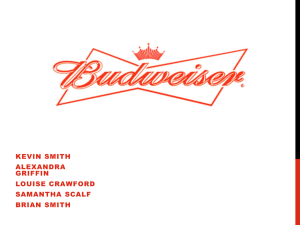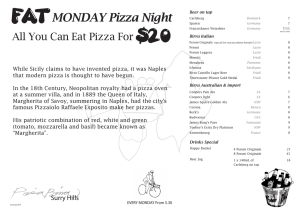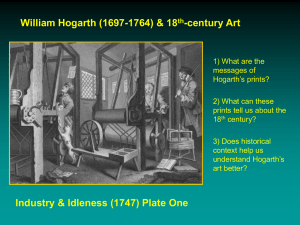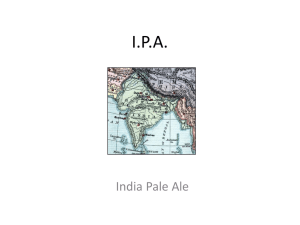Beer Evaluation Course - Bull Falls Home Brew Depot
advertisement
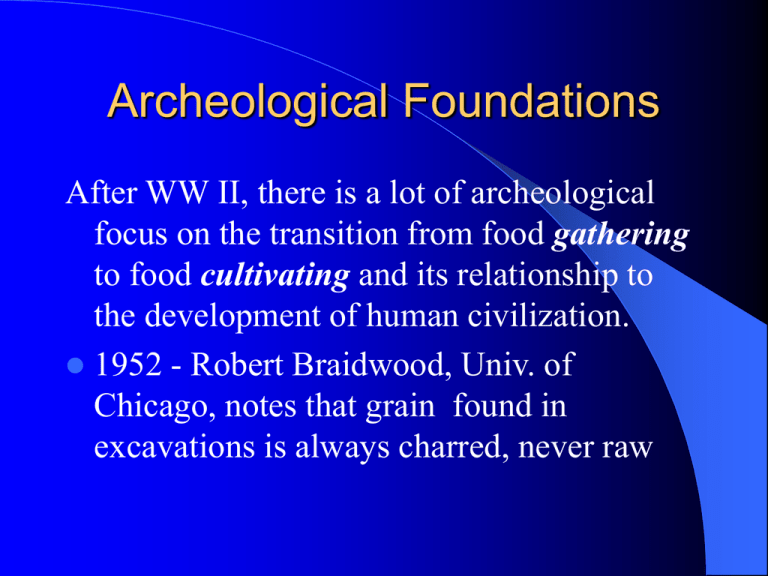
Archeological Foundations After WW II, there is a lot of archeological focus on the transition from food gathering to food cultivating and its relationship to the development of human civilization. 1952 - Robert Braidwood, Univ. of Chicago, notes that grain found in excavations is always charred, never raw Archeological foundations (cont) Jonathon Sauer, Univ. of Wisconsin botanist “Bread or beer?” Why did man harvest wild grains? pre-plow era, plus the fragility of the rachis of cereal grain makes would make the collection of grain for mere food very labor intensive, especially if other food is more readily available a more rewarding product might, however, prompt interest in this effort Archeological foundations (cont) Significant argument that the charred grain was not malted grain, so the question has never been satisfactorily resolved Consequently, more work has established some time frames that enable us to give some sort of historical perspective to beer Beer “pre-history” 17,000 BCE - earliest traces of Hordeolum spontaneum (wild barley) evolve on the south shore of the Sea of Galilee 7750 BCE - earliest domesticated barley, H. distichum in Jericho area (mixed with wild barley) 6000 BCE - H. hexastichum appears at Ali Kosh (Iraq), domesticated barley Beer “pre-history” (cont) clay pottery appears – 7500 BCE in northern Iraq – 6000-5500 BCE in Syria This pottery is very porous and more suitable for dry storage rather than wet storage. Techniques for making suitable liquid storage vessels will not come until much later Beer pre-historical sites Ali Kosh (Iraq) – 6 row barley cultivated Turkey Syria Iraq Egypt – 2 row barley cultivated Iran Saudi Arabia Netiv Hagdud (Israel) Godin Tepe (Iraq) – shard with beerstone “Beer makes Civilization”? 1986 - Solomon Katz/ Mary Voigt (University of Pennsylvania) propose that beer making led to the domestication of wild cereals. They argue that: Beer is a better source of calories compared to the wild grain itself incorporation into the social & religious structure was integral to formalizing a brewing process “Beer & Civilization”? (cont) Katz & Voigt suggest a scenario that would lead to brewing gruel left overnight that accidentally sprouts (malts) discovery of the sweet taste of the malt heating of the malted gruel to improve taste subsequent spontaneous fermentation of heated malt gruel by wild yeast “Beer & Civilization”? (cont) 1994 - Tom Kavanaugh, Indiana University publishes article refuting the premise of beer being the primary driver of grain domestication absence of good water-tight vessels lack of adequate temperatures for enzyme production without heating, again the problem of a lack of suitable vessels Some more beer history: 6000 BCE- Sumarian tablets with poetry to brewing goddesses Ninkasi and Osiris establish a basis that brewing was likely relegated to women. This is considered to be the best earliest source of documentation for established brewing! Calcium oxalate (“beerstone”) residue found in clay jug shards found in western Iraq Ode to Ninkasi 19th century BC Sumaria– earliest known beer recipe Partially baked bread called bappir (made from barley) Soaked in water Flavored with dates, honey Spontaneously fermented Filtered and consumed immediately Beer & Society Beer becomes intertwined with politics, religion & the economy by the middle ages with the Catholic Church controlling all aspects of brewing via monasteries The rise of artisans & trading guilds help spawn independent brewing efforts outside the Church. Beer & the military Beer has been part of military rations for centuries. Greek army Roman army Germanic armies that conquered Rome! Fredrich the Great expounded on the virtues of armies fed on beer Regulations evolve Sanitation becomes a major issue as water is often contaminated; it becomes common practice to drink beer as both a food & in place of water. Government attempts to utilize alcohol as a source of revenue and wrest the control of brewing from the Catholic church as the Reformation sweeps across Europe Example of regulation 1156- Fredrick I issues the Justitia Civitatis in Augsburg (prohibiting short pours) 1447 - Munich ordinance; beer can only be brewed with barley, hops, & water 1516 - Reinheitsgebot (Bavarian Beer Purity Act); beer can only have barley, hops, & water It ain’t about quality! Reinheitsgebot insured: protection for the barley farmers maintained price supports for beer (insures steady tax revenue) that wheat would be available for bread making Beer continues to evolve: Hops, long used by continental brewers for stability finally gains acceptance in Britain around mid-1700's. Taxation limits strength & gravity of British beers, particularly in Scotland. The isolation of yeast by Pasteur helps foster the advent of Lagers. Beer in America Settlers arriving in America are forced to drink water as critical brewing ingredients are withheld for sailors. Enterprising Americans find new adjuncts to counter the limits on supply & taxation by the British Crown. Taverns become the focus of all business & legal activity, as well as political gatherings. The American Revolution threatens essential beer production. Some more beer history: German immigrants bring brewing practices to America & abroad, significantly threatening ale production. Refrigeration creates opportunity for massproduction of Lagers but doesn't become popular till after the Civil War. Dark clouds on the horizon The Rise of Temperance through the ealy 20th century begins to affect public opinion on consumption. 1916 - August Busch introduces Bevo to the market, a non-alcoholic beer 1919 - Volstead Act (18th Amendment) passes Congress Jan 29, 1920 - Prohibition begins “Survival of the fittest” Prohibition kills more than 200 domestic breweries, but homebrewing gains in popularity Top 10% corporate breweries struggle to diversify into other markets: – Coors to Ceramics – A-B to malt products – Schlitz to candy & chocolate – Miller to cereals. Relief at last? FDR repeals Prohibition in 1932 & raises the limit of alcohol in beer to 3.2%. Apr 7, 1933 - Brewing ban ends Dec 5, 1933 - Prohibition completely ends Clerical error in the drafting of the signed bill allows home wine making but continues to prohibit home brewing. WWII - women become part of the American workforce; shortage of grains force the use of adjuncts such as corn & rice which become a common feature for the American Lager grain bill. Diversity becomes possible 1975 - Fritz Maytag (of laundry machine fame) introduces Anchor Steam Beer and starts the Microbrew Revolution Mid-1970s – Charlie Papazian leads efforts to get home brewing legalized; founds the American Hombrewer Association 1978 – President Jimmy Carter signs legislation permitting home brewing (if allowed by the state) Today There are now as many, if not more, small breweries than prior to Prohibition Home brewing starting to re-emerge as a popular hobby as costs of commercially available craft beer (ingredient costs and taxes) continue to rise Consumers become more sophisticated in their preferences for all types of alcohol
